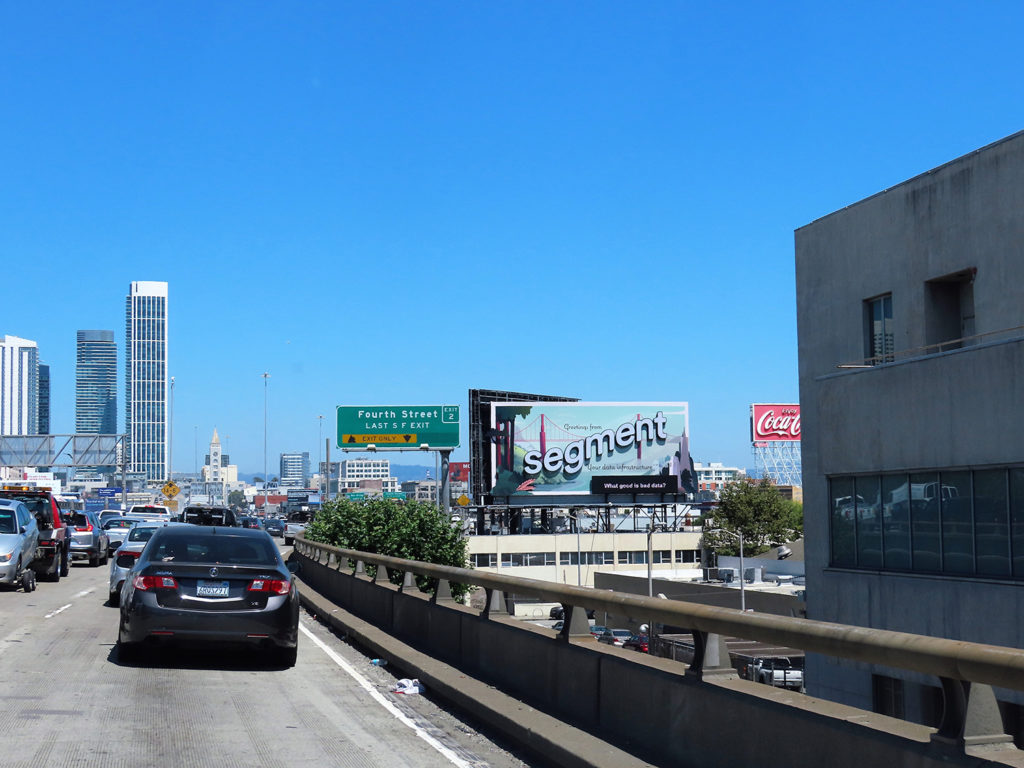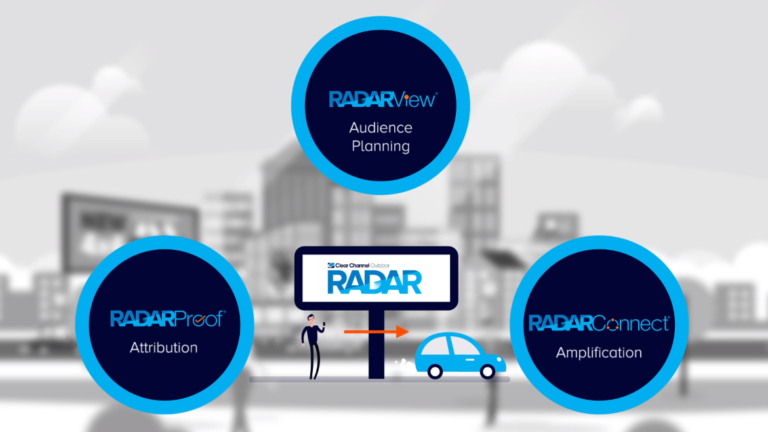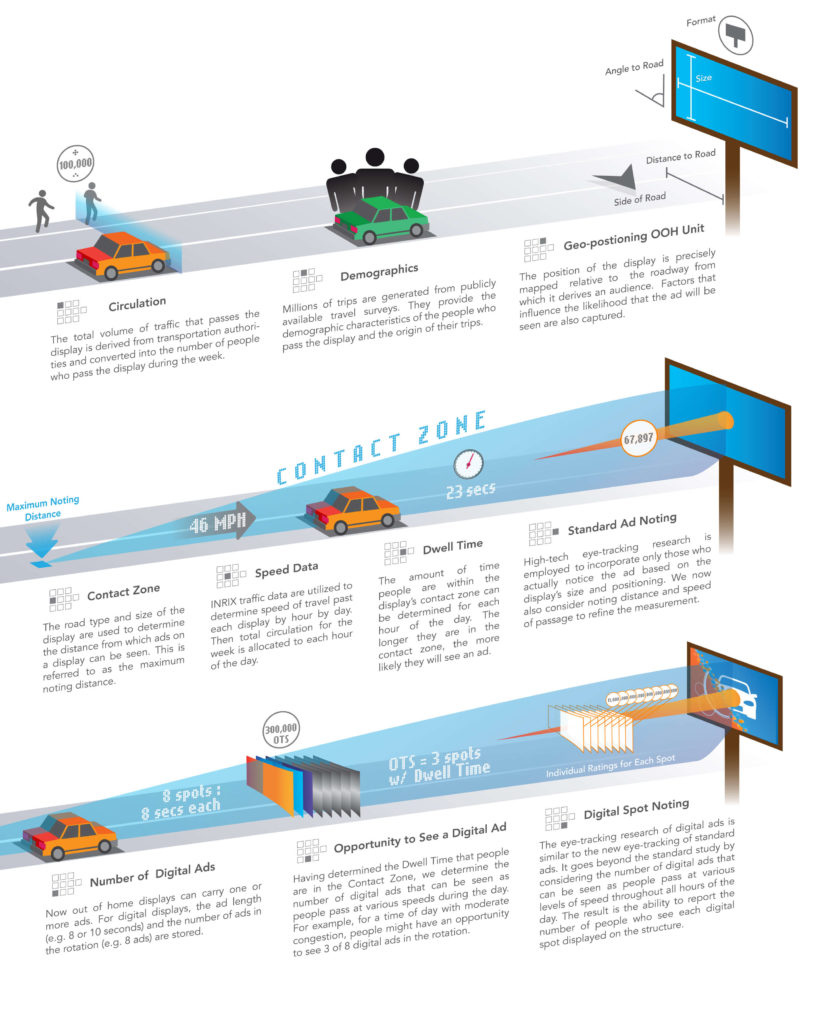Innovator Spotlight
Dan Levi, Executive Vice President & Chief Marketing Officer of Clear Channel Outdoor

I’m thrilled to be where I am and to have the opportunity to help drive one of the oldest advertising mediums into an exciting new future.
JUST thrives on finding the most innovative solutions to our client’s marketing challenges. Our new “Innovator Spotlight” series celebrates fellow individuals and companies leading marketplace technology, insights and strategies.
Dan Levi is executive vice president and chief marketing officer of Clear Channel Outdoor Americas. He leads the organization’s overall marketing strategy and execution in support of the company’s vision of enabling advertisers and brands to captivate audiences wherever they are.
Dan, thank you for joining JUST’s “Innovator Spotlight” series. You have an illustrious career in media and marketing that we can all learn from.
Tell briefly about your background, your current role and why you love Clear Channel Outdoor?
I’ve spent my 30+ year career in advertising, media and entertainment marketing, and have had some wonderful opportunities to learn, innovate and build relationships with great people.
I never planned to be an “Out of Home media guy” but I’m thrilled to be where I am and to have the opportunity to help drive one of the oldest advertising mediums into an exciting new future. I love what we’re doing at Clear Channel because we’re building on the inherent strengths of Out of Home – massive creative canvas, ability to tell impactful brand stories, efficient reach, etc. – by bringing to market innovative, data-driven tools that help advertisers view the power and impact of OOH in the context of mobile and data-driven audience programs. We’re proving not just that OOH delivers measurable results but that it makes other digital media perform even better. Exciting times!
What have been some of your proudest accomplishments or campaigns in your career?
I was fortunate to be a part of the early days of MTV, having the opportunity to learn from some of the most creative and innovative leaders in entertainment and media. It also gave me the chance to move to Singapore and launch MTV Asia, which was a truly amazing experience, living in Asia for five years, helping to reinterpret what an iconic brand like MTV stood for in ten very different markets, and figuring out how to conduct business and build relationships in very different cultures. I also had the opportunity to learn from one of the most influential and impactful promoters ever – Vince McMahon – where I helped to modernize World Wrestling Entertainment’s approach to brand marketing and brand extensions. A truly unforgettable experience.
Finally, I’m so proud of how we launched and have integrated Clear Channel Outdoor RADAR, our suite of mobile data analytics solutions, into how Clear Channel does business day–to–day. RADAR is playing a key role in how we transform our business to focus on delivering measurable solutions and actionable insights to our customers.
You recently told Adweek, “our product isn’t the billboard; it’s the people that are reached by the billboard.” How do you keep this human-centric approach across your business?
I talk a lot about the idea of “audiences and outcomes.” While our business is driven by the unique value, locations and reach of our Out of Home assets, I try to help our teams keep in mind that advertisers might transact with CCO for ads, but they’re not really buying ads. What they’re buying is a means to deliver a message to specific audience segments in order to influence their behavior. As long as we keep a focus on understanding who those target audiences are and what behaviors our customers are trying to drive, we will not just sell our billboards but deliver measurable, repeatable, scale-able solutions that customers will value because of their impact on business results. And that will lead to purchasing of more billboards. Start with an understanding of customers’ business needs and challenges and have confidence that our inventory, data and innovative solutions will deliver the results they need in ways that extend and deepen our customer relationships.
With the global pandemic changing consumer needs and behaviors, many brands are wondering how to evaluate their marketing efforts with out-of-home. How is this impacting your business and what steps are you taking to adjust?
Clearly, a global pandemic that resulted in people being urged to stay home created some short-term challenges for a business that is literally called “Out of Home Media.”

That said, at Clear Channel we not only quickly pivoted to working from home – and the overwhelming number of Zoom calls that come with it – but we also made sure our focus was on three primary areas: the health & safety of our team members; the maintenance of our physical structures and operations to ensure we could manage customers’ ongoing campaigns; and development of solutions to help our customers manage through this crisis to support the unique and unprecedented business challenges they all were facing.

Why should B2B companies invest in OOH today? In 6 months? What about consumer brands?
OOH remains a highly effective means to deliver impactful, creative brand messages at scale. With tools like Clear Channel Outdoor RADAR, marketers can now approach audience planning, measurement and retargeting as they do with traditional digital and mobile media. This includes leveraging a range of custom audience targets, both B2B and B2C, to optimize the efficiency of audience delivery. In addition, more and more of the OOH sector’s inventory has been converted into Digital OOH displays, allowing for dynamic creative, quick changes to campaigns, programmatic buying via cross-channel DSPs and more. And without the issues of viewability, fraud and bots that plague traditional digital media channels. We are proving not just that OOH delivers measurable results, but that it also makes the rest of the campaign work harder.
There is an “Instagrammable” quality to Out-of-Home, oftentimes generating significant earned media while also driving better performance from key tactics like search. In today’s digital and mobile-led media mix, Out-of-Home continues to be the team player that makes the rest of the team play better.



Do you see long-term changes to your audience behaviors?
Through our data and analytics platform, RADAR, Clear Channel has been tracking the impact of COVID-19 on consumer travel patterns and behavior. We definitely saw that “shelter in place” restrictions had an immediate impact on how many people were on the streets and what people were doing outside of the home. During the initial weeks of the crisis, we saw behavior indicative of what we called “Purposeful Travel.” Consumers were still leaving the home, but they were either doing so because they worked in businesses deemed essential or they were going to specific locations for very specific reasons – e.g., food, medicine, supplies. We also observed that people tended to initially travel shorter distances from the home.
Across three key categories – QSR, Grocery and Convenience Stores – we saw that people who were exposed to OOH ads visited these open and essential businesses 83% more than people who did not see the OOH ads during that same time period.
But then some interesting things happened. We ran a study, using Clear Channel’s RADARProof attribution analytics platform, to understand if OOH was still delivering measurable results for customers, even in this time of changed travel patterns and behavior. We looked at businesses that were open during shelter in place and that were still using OOH to advertise themselves. Across three key categories – QSR, Grocery and Convenience Stores – we saw that people who were exposed to OOH ads visited these open and essential businesses 83% more than people who did not see the OOH ads during that same time period. Even during a crisis of this magnitude, OOH is driving positive impact on business results and changing consumer brand preferences and behavior. Really speaks to the enduring value of OOH.
Since markets have started to open and consumers have responded by returning to greater observed travel distance and frequency, we’ve also recognized that behaviors have changed in some fairly consistent ways. So Clear Channel invested in the creation of more than 30 target-able audience segments of people whose behavior was changed by COVID, recognizing that as businesses reopen, they will need to find their customers once again, even in a time of changed behaviors. We can now help advertisers deliver their messages to groups of people who used to visit certain businesses but have not recently – e.g., lapsed casino goers, lapsed movie viewers and lapsed theme park customers – as well as reaching people who have predominantly visited businesses closer to their homes during the crisis. We have also created audience segments of people who work in essential roles – e.g., on-demand workers, healthcare, teachers, grocery workers – which has become highly valuable as so many businesses start to once again recruit and rehire employees.
Finally, we have created data tools that we are using to understand how consumers are returning to more than 20 types of retail businesses, so we can help our sales teams understand how our customers’ businesses have been impacted and when we’re seeing a return to normalcy. Not only does it provide actionable insights for our teams, but it also helps them better understand how consumer behavior continues to evolve as we move forward as a nation.
It might surprise brand marketers to learn about the digital capabilities of OOH. Yet, Clear Channel Outdoor is engaging with highly-nuanced audience measurement and data-driven techniques. How is Clear Channel incorporating data to merge the digital and physical worlds?
In 2016 Clear Channel launched RADAR, our suite of audience planning, measurement and amplification solutions that leverage anonymized mobile location data to understand consumer movement and behavior in the physical world, and the role that Out-of-Home plays in influencing that behavior. All of the RADAR solutions are grounded in the idea that exposure to Out-of-Home advertising has a measurable impact on consumers and how they engage with brands both in the real world and online. When originally brought to market, RADAR was primarily a tool used to rank each Clear Channel display’s efficiency in reaching a range of consumer audience segments. Today, RADAR consists of four integrated tools that address different aspects of the OOH planning, buying and optimization process:
- RADARView: a dynamic, map-based campaign planning tool that allows inventory to be selected and plans to be built based on a combination of: geographic location; proximity to a range of retail locations and other points of interest; display type (bulletins, posters, street furniture, digital displays, etc.); demographic data from Geopath and other sources like the US Census; and more than 1,500 behavioral audience segments, both B2C and B2B.
- RADARProof: a suite of campaign measurement and attribution solutions that provides advertisers with actionable insights into OOH campaign performance, including standard attribution solutions like Visit Studies (measuring OOH’s ability to drive people into retail stores and other physical locations) and Mobile Surveys (understanding how OOH impacts consumers’ awareness, perception and purchase intent). RADARProof can also provide measurement of OOH’s ability to impact digital behavior (web conversions, app downloads); TV tune-in; product purchases; travel and tourism; and a range of other campaign objectives.
- RADARConnect: a platform to extend and amplify the impact of Out-of-Home advertising, RADARConnect anonymously identifies mobile devices that pass by OOH ads and retargets these exposed audiences with amplification messaging via mobile, desktop and online video ads. RADARConnect not only drives better campaign performance but also provides further insights into consumer behavior and response to ads, allowing for further optimization of campaign performance and impact.
- RADARSync: a platform for integration of customers’ preferred data – 1st, 2nd or 3rd-party – so the RADAR solutions can be customized and applied to each customer’s unique approach to data and analytics.
Tell us about some of the audience measurement upgrades to Geopath and how it helps brand marketers.
Geopath, the independent organization that provides audience measurement for the Out-of-Home industry, has made tremendous progress in modernizing the industry’s approach to understanding audiences reached. OOH historically had been measured primarily by counting traffic.
Today, Geopath has built a much more robust solution that leverages demographic data, behavioral insights and mobile location data to understand movement patterns – where people go, and the roads they travel on – so advertisers can have a richer understanding of the people that OOH ads can reach and impact.
The new Geopath data can be accessed via their web-based “Insights Suite” planning tool, while also being able to be integrated into bespoke planning platforms like RADARView and agencies’ planning tools.
With the dramatic impact of COVID-19 on consumer travel behavior, the Geopath team quickly pivoted to develop tools to help advertisers, agencies and media owners understand how “shelter in place” restrictions were impacting audiences reached by Out-of-Home media.
These tools were critically important in providing objective, independent insights into how people’s travel patterns were changing. More importantly, they’ve also helped the industry understand how, when and where the return to travel was happening, giving marketers guidance on the ways that Out-of-Home can help in the recovery from COVID.
Could you explain how RADARView can help account based marketing efforts efficiently reach desired customers?
On top of the 1,500+ B2B and B2C targeting audiences built into RADARView, the platform was built to be able to integrate customers’ preferred data sets. Working with industry-leading and privacy-compliant identity resolution partners (including LiveRamp, Neustar and Experian), RADARView can on-board customers’ 1st, 2nd or 3rd–party data sets and match them against the RADARView audiences to provide custom analysis of what CCO inventory is most efficient at reaching these target audiences. In addition to working with customers’ data, Clear Channel is in the early stages of investigation B2B/ABM audiences from Bombora and other industry leaders.
In addition, with airports being a critically important environment for B2B advertising, Clear Channel is working hard to expand the RADARView tool to include Clear Channel Airports inventory and audiences. We plan to launch this latest extension of RADARView’s B2B targeting capabilities before end of 2020.
How should agencies be advising their clients around the future of out-of-home?
Pre-COVID, Out of Home was the only traditional media that was seeing consistent growth, and even with the impact of COVID most projections are that OOH will see a strong rebound as the economy recovers. As our nation deals with the implications of COVID and people emerge from sheltering in place, we are seeing a fast return to traditional travel patterns, with consumers freely moving around on roadways and in public spaces. We expect consumers to put even more value in the role that OOH plays in delivering brand messages and helping consumers navigate through the somewhat changed world around them.
We expect consumers to put even more value in the role that OOH plays in delivering brand messages and helping consumers navigate through the somewhat changed world around them.
If marketers and agencies keep a focus on audiences and outcomes and understand how consumer behavior continues to evolve, we think there will be a fast return to Out of Home as a growing channel that is even more deeply integrated into marketers’ plans.
Dan, thank you again for sharing your valuable insights.



